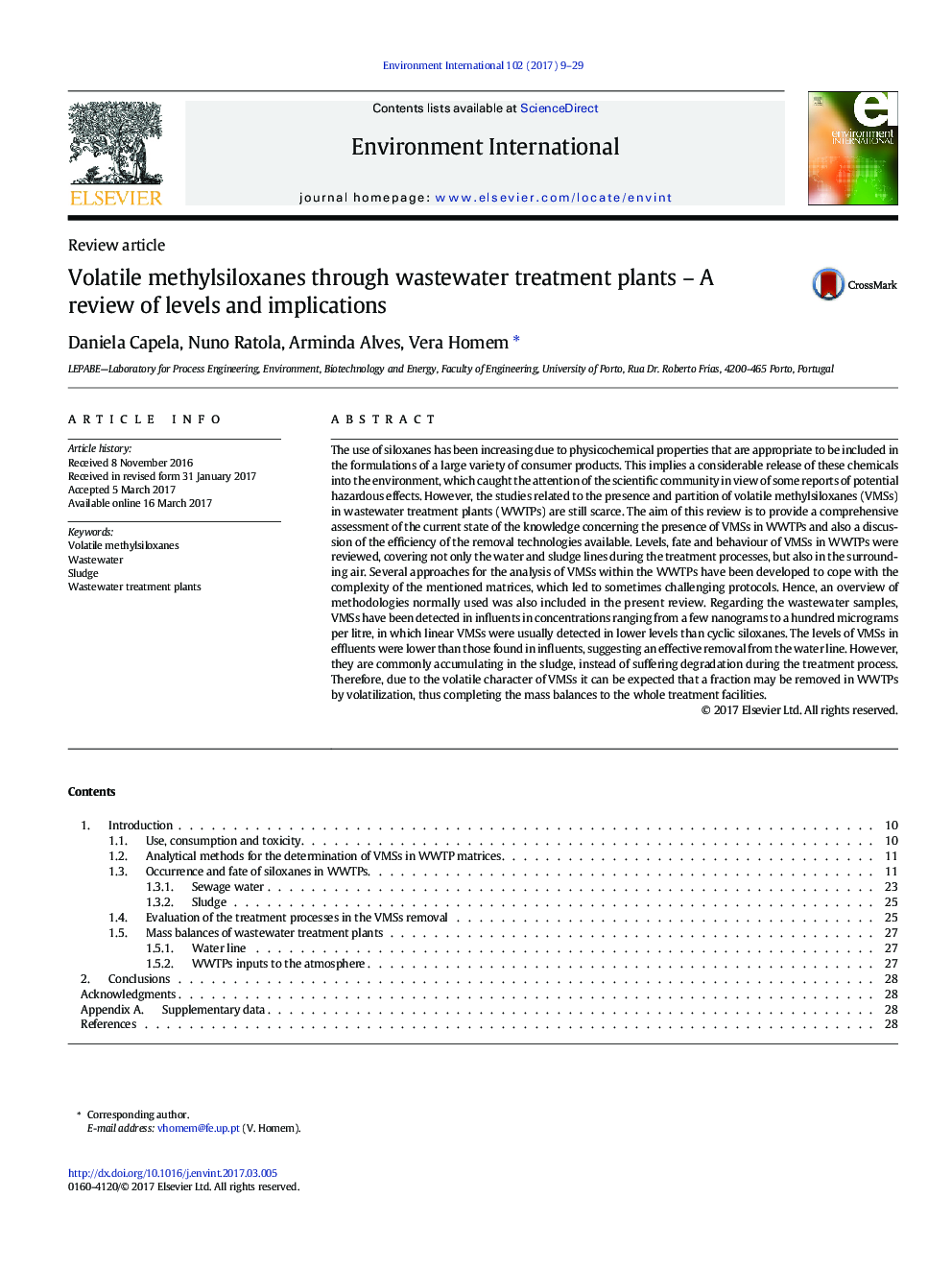| Article ID | Journal | Published Year | Pages | File Type |
|---|---|---|---|---|
| 5748240 | Environment International | 2017 | 21 Pages |
â¢Levels, fate and behaviour of VMSs in WWTPs were reviewed.â¢In influents, VMSs had concentrations between nanograms and micrograms per litre.â¢Linear VMSs were detected in lower levels than cyclic siloxanes.â¢The levels of VMSs in effluents were lower than those found in influents.â¢WWTP treatments transfer VMSs to the sludge phase, with little actual removal.
The use of siloxanes has been increasing due to physicochemical properties that are appropriate to be included in the formulations of a large variety of consumer products. This implies a considerable release of these chemicals into the environment, which caught the attention of the scientific community in view of some reports of potential hazardous effects. However, the studies related to the presence and partition of volatile methylsiloxanes (VMSs) in wastewater treatment plants (WWTPs) are still scarce. The aim of this review is to provide a comprehensive assessment of the current state of the knowledge concerning the presence of VMSs in WWTPs and also a discussion of the efficiency of the removal technologies available. Levels, fate and behaviour of VMSs in WWTPs were reviewed, covering not only the water and sludge lines during the treatment processes, but also in the surrounding air. Several approaches for the analysis of VMSs within the WWTPs have been developed to cope with the complexity of the mentioned matrices, which led to sometimes challenging protocols. Hence, an overview of methodologies normally used was also included in the present review. Regarding the wastewater samples, VMSs have been detected in influents in concentrations ranging from a few nanograms to a hundred micrograms per litre, in which linear VMSs were usually detected in lower levels than cyclic siloxanes. The levels of VMSs in effluents were lower than those found in influents, suggesting an effective removal from the water line. However, they are commonly accumulating in the sludge, instead of suffering degradation during the treatment process. Therefore, due to the volatile character of VMSs it can be expected that a fraction may be removed in WWTPs by volatilization, thus completing the mass balances to the whole treatment facilities.
